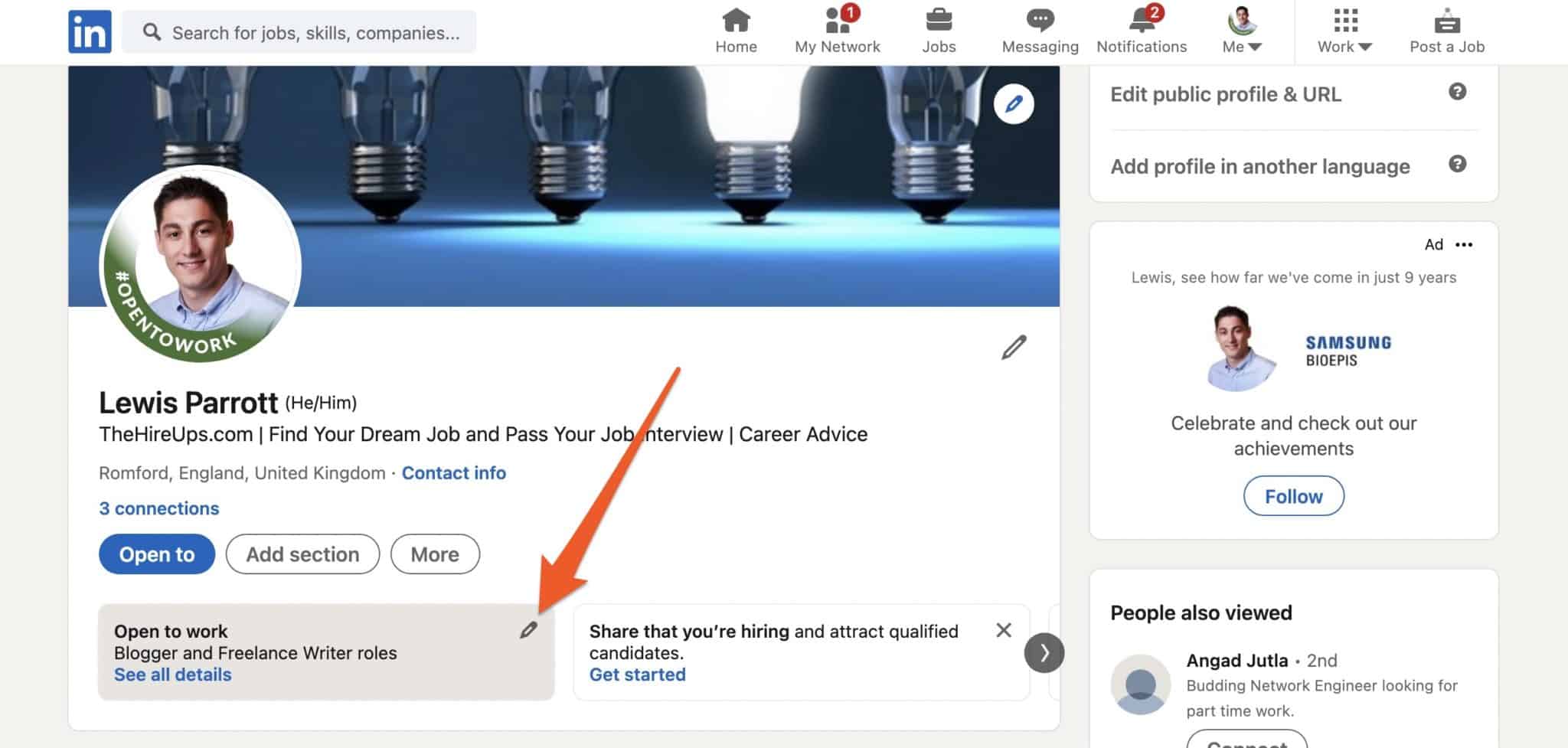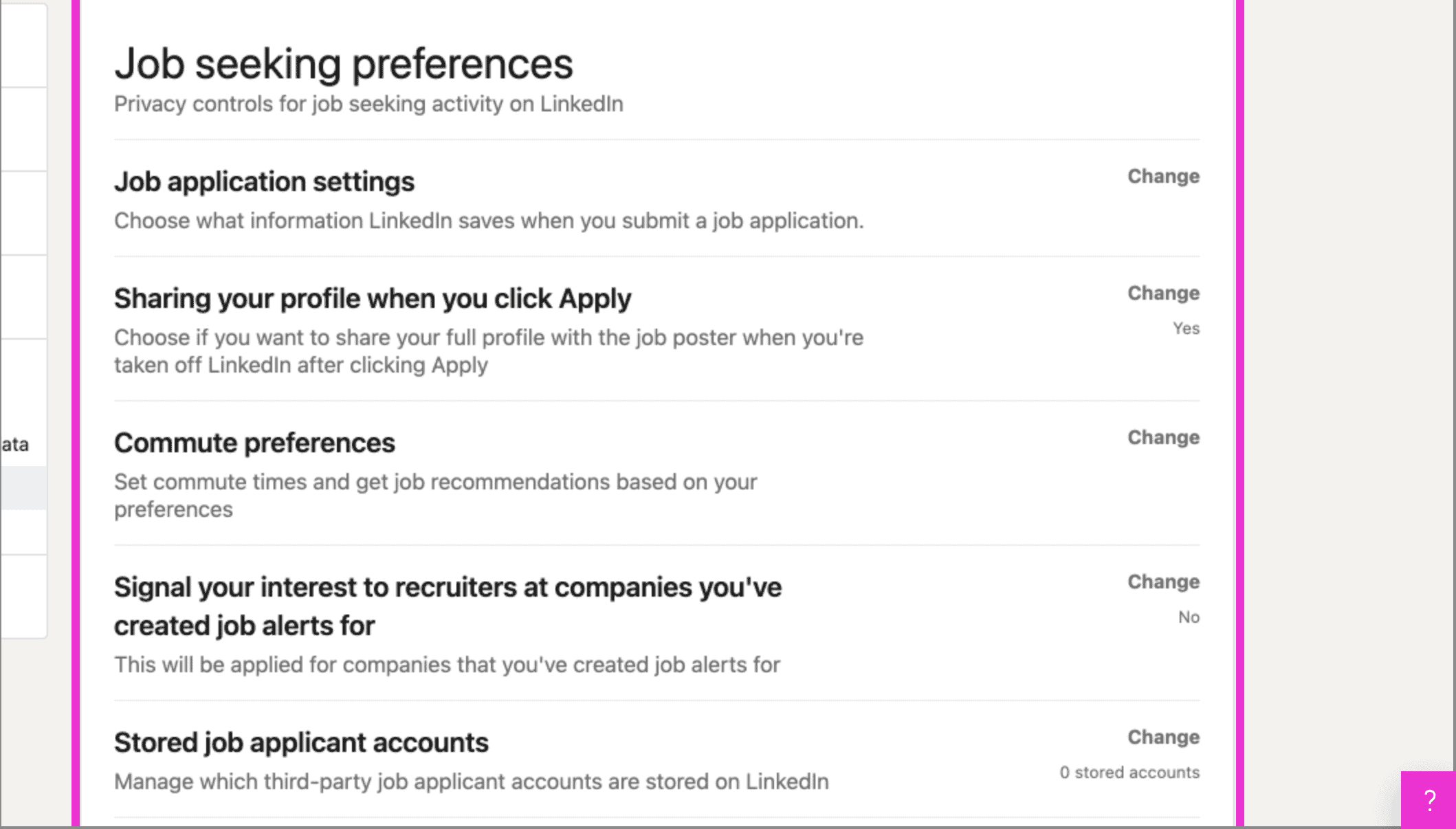Hey there! If you're on the job hunt and want to attract potential employers, you've likely heard of LinkedIn's "Open to Work" feature. This handy tool allows you to signal to recruiters that you're looking for new opportunities. Whether you’re currently employed and discreetly searching or are fully available, letting others know your job preferences can make a significant difference in your job search. In this post, we'll explore how to navigate this feature effectively and why it’s crucial to keep your preferences updated.
Why Update Your Job Preferences on LinkedIn?

Updating your job preferences on LinkedIn isn’t just a formality; it’s a strategic move in today’s competitive job market. Here are several reasons why you should consider keeping them up to date:
- Visibility to Recruiters: By updating your preferences, you enhance your visibility to recruiters who are searching for candidates with your skills and experience. This feature allows you to stand out in a crowded job market.
- Tailored Job Recommendations: LinkedIn uses your preferences to suggest jobs that align with your career goals. The more specific you are, the better the recommendations will be. This saves you time and effort in your job search.
- Polished Professional Image: Keeping your preferences current showcases that you’re proactive and serious about your career. This impression can be positive for your overall professional brand.
- Narrowing Your Focus: By specifically stating the types of jobs you’re interested in, you can filter out irrelevant opportunities. This focus allows you to apply for roles that genuinely interest you.
When you update your job preferences, you can also specify details such as:
| Preference | Description |
|---|---|
| Job Titles | Choose specific roles you are looking for, making it easier for recruiters to find you. |
| Location | Specify where you want to work, whether it's remote, hybrid, or a specific city. |
| Job Type | Indicate if you’re seeking full-time, part-time, contract, or internship positions. |
| Industries | Select the industries that interest you most, helping recruiters tailor their search. |
Finally, updating your job preferences allows you to connect with other professionals who may offer valuable insights or opportunities. Networking is a crucial aspect of a successful job search, and when your profile clearly states what you’re looking for, it invites more meaningful interactions.
In summary, regularly updating your LinkedIn job preferences is a simple yet effective way to enhance your job search strategy. It keeps you aligned with your career goals, increases your chances of being discovered by recruiters, and ensures that you receive job suggestions that truly fit your aspirations. So, don’t hesitate—take a moment to refresh your LinkedIn profile today!
Also Read This: How to Ask for a LinkedIn Recommendation Without Being Awkward
3. Step-by-Step Guide to Changing Your Open to Work Settings

So, you’ve decided it’s time to update your LinkedIn profile and signal to recruiters that you’re open to new opportunities. Great choice! It’s a simple process, and I’m here to walk you through it step by step.
Follow these easy steps to change your “Open to Work” settings:
- Log in to Your LinkedIn Account: First things first, head to LinkedIn and log in with your credentials.
- Go to Your Profile: Click on your profile picture or the “Me” icon at the top of LinkedIn’s homepage. This will take you directly to your profile page.
- Find the Open to Work Section: Scroll down your profile until you see the “Open to work” section. If you haven’t set this up yet, you’ll see an option to add it. If you have previously set this, click on the pencil (edit) icon to modify your settings.
- Add Job Titles: Click on “Add Job Titles” to indicate the types of roles you are interested in. Be as specific as possible to help recruiters find you more easily!
- Select Your Job Preferences: Here, you can choose your preferred job locations, the types of employment (full-time, part-time, contract, etc.), and when you’re available to start. This step is crucial for making sure that you attract the right opportunities.
- Decide Who Can See You’re Open to Work: LinkedIn offers privacy settings on who can see your “Open to Work” status. You can choose between sharing it with all LinkedIn members or just recruiters. It’s wise to choose the latter if you want to keep it a bit more on the down-low.
- Review Your Settings: Take a moment to double-check all the information you’ve provided. Make sure everything is accurate and reflects what you want.
- Click Save: Once everything looks good, hit the “Save” button to update your settings. And voila! You’re now officially open to work!
By following these steps, you’ll ensure that your LinkedIn profile stands out to recruiters and hiring managers. It’s a small yet powerful way to broadcast your job search to a vast network!
Also Read This: Which Book App Wins in 2025? A Smart Guide to Headway vs Blinkist
4. Adjusting Job Preferences: Key Options Explained
Now that you know how to change your “Open to Work” settings, let’s delve deeper into the job preferences you can adjust. Understanding these key options will help you tailor your job search effectively.
Here’s a breakdown of the most important job preference options you can set:
- Job Titles: This input field is where you specify the roles you are looking for. Use relevant keywords and common titles that recruiters might search for. Don’t hesitate to include variations to widen your net. For instance, “Marketing Specialist” or “Digital Marketing Manager”.
- Location: Location is a crucial factor in job searches. You can add specific cities, states, or even opt for remote opportunities. If you’re open to relocating, mention that! Make sure to select the best suited geography that fits your preferences and lifestyle.
- Job Type: This allows you to indicate what kind of employment you’re looking for. Is it full-time, part-time, freelance, or contract work? Each option serves different needs, so pick what aligns with your current situation.
- Start Date: Are you ready to jump into a new role immediately, or do you need some time? Specifying your availability can help recruiters gauge how urgent your job search is and if they can meet your timeline.
Adjusting these preferences not only helps recruiters understand your aspirations better but also streamlines your job search, ensuring that you get notifications and recommendations that truly resonate with your career goals.
Remember, updating your LinkedIn profile and job preferences can have a significant impact on your networking potential. So, take a few moments to get it right – your dream job could be just around the corner!
Also Read This: How to Endorse Someone on LinkedIn: A Detailed Walkthrough
5. Tips for Maximizing Your Open to Work Visibility
So, you’ve activated your LinkedIn “Open to Work” feature—great choice! But how can you ensure that potential employers really notice it? Here are some actionable tips to maximize your visibility:
- Customize Your Headline: Your LinkedIn headline is prime real estate! Instead of just stating “Open to Work,” consider adding your desired role or industry. For example, “Marketing Specialist | Open to Work in Digital Marketing” makes it clearer what opportunities you’re looking for.
- Engage with Your Network: Don’t just sit back and wait. Actively engage with your connections by commenting on their posts, sharing relevant content, and even creating your own posts. This increases your visibility and keeps you on peoples’ radars.
- Update Your About Section: Use this space to tell a compelling story about your skills, experiences, and what kind of roles you’re interested in. Be sure to include relevant keywords that a recruiter might search for.
- Leverage LinkedIn Groups: Join groups related to your industry and participate in conversations. This will not only expand your network but also place you in front of decision-makers who share similar interests.
- Tailor Your Skills: Make sure your skills section is up-to-date and reflects the skills most relevant to the roles you're aiming for. When recruiters search for candidates, they'll often filter by skills.
- Reach Out to Recruiters: Don't hesitate to send a direct message to recruiters or hiring managers with a personalized note. Express your interest in opportunities and let them know you're “Open to Work.”
- Post Regularly: Sharing your expertise, insights, or even challenges in your job search can keep your profile active. Consider posting articles, sharing updates about industry trends, or even writing about your job hunt journey.
By implementing these strategies, you'll improve your chances of standing out and attracting those exciting job opportunities!
Also Read This: How to Find Your Draft Posts on LinkedIn and Manage Them
6. Common Mistakes to Avoid When Updating Preferences
Updating your LinkedIn job preferences is important, but there are certain pitfalls you’ll want to avoid to ensure everything goes smoothly. Here are some common mistakes that can trip you up:
- Not Being Specific: Vague preferences can confuse recruiters. Instead of choosing “Open to Any Role,” specify your desired roles, industries, and locations. Clarity helps recruiters understand exactly what you’re looking for.
- Neglecting Your Privacy Settings: When you switch on the “Open to Work” feature, ensure your privacy settings are configured correctly. You want to be visible to recruiters while maintaining control over who sees this information.
- Forgetting to Update Your Profile: It’s easy to forget that your profile should reflect your latest experiences and achievements. Make sure your work experience, certifications, and skills are current to give recruiters a comprehensive view of your qualifications.
- Leaving Out Keywords: If you’re flying under the radar, it could be because your profile lacks relevant keywords. Research keywords associated with your desired position and incorporate them naturally into your profile.
- Not Engaging with Outreach: If recruiters reach out to you, respond promptly! Ignoring messages can come off as disinterest. Engaging can lead to networking opportunities that you might not want to miss.
- Sticking With a Generic Resume: It’s not just your LinkedIn that counts; your resume should also be tailored to align with your specific job preferences. Ensure both platforms tell a cohesive story.
- Underestimating the Power of Professional Photos: Invest in a quality profile photo! A professional headshot boosts credibility and can make your profile more inviting.
Avoiding these common mistakes can help you present a polished, appealing profile to recruiters who are eager to connect with candidates like you. Happy job hunting!
Conclusion: Keeping Your Profile Dynamic and Relevant
In today’s fast-paced job market, maintaining an up-to-date LinkedIn profile is essential for maximizing your visibility and attractiveness to potential employers. Here are some key strategies to ensure your profile remains dynamic and relevant:
- Regularly Update Your Skills: As the industry evolves, so do the skills in demand. Make sure to review and add new skills that are pertinent to your field.
- Engage with Content: Share industry-related articles, comment on posts, and write your articles to showcase your expertise and interests.
- Network Actively: Connect with new colleagues, industry leaders, and join relevant groups to enhance your network.
- Leverage Recommendations: Request and provide endorsements and recommendations to strengthen your credibility and showcase your strengths.
Moreover, consider the below checklist for keeping your profile fresh and appealing:
| Action Item | Frequency |
|---|---|
| Update your headline and summary | Every 3-6 months |
| Add new projects or achievements | As they occur |
| Participate in group discussions | Weekly |
| Review your connection network | Monthly |
By following these strategies, you’ll not only make sure that your LinkedIn profile reflects your current professional status but also engage with your network effectively, ultimately increasing your chances of landing your next opportunity.
 admin
admin








